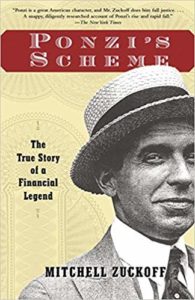This year we will be doing something a little different with our education moments for GBN. Our time will be spent on teachable moments derived from the lives of well-known leaders. I have created a shortlist of people that I want to cover, but I am open to suggestions. If you have a suggestion, please email me: (dgerdes@csuniv.edu).
Preferences will be given to business leaders, but I will also include other historical leaders (as long as I can find good biographies about them). Please remember, I only have 52 weeks in the year, so I have to limit my topics, but I really do welcome your suggestions.
In general, I will choose leaders from whom we can learn positive, inspiring lessons. This week, however, we will start a bit differently.
Leader #1
I recently completed a fascinating biography of one of the early 20th century’s most admired businessmen. His name was Charles.
Charles was an immigrant who became a multi-millionaire. Having arrived in America with only $2.50 in his pocket, he appeared to embody the American Dream. He took the first job he could find and began working hard to build his future. The job as a dishwasher paid the bills and allowed him to eat, but he came into his genius when he took a job at a bank.
What really made his career was what he learned from his boss, Louis. He looked up to Louis—also an immigrant whose real name was Luigi Zarossi. He learned a way to do business that inspired his whole career.
Louis taught him how to grow his business by giving his customers more than they expected—a higher interest rate than they could find elsewhere. Unfortunately, Louis paid for the interest, not with the interest of carefully placed investments, but with the principal from other investors.
Charles learned this system and perfected it. Eventually he built a financial empire on this one key insight. This financial system was ultimately named after him. His name was Charles Ponzi and he became the most notorious white-collar criminal of the early 20th Century, father of the Ponzi Scheme. It could just as easily have been called the Luigi Zarossi scheme. Ponzi just did it bigger.
The point here is that he couldn’t have done it without the example that his boss set for him. And, from my observation of great leaders (good or bad), they generally had help as they developed.
Hitler’s role model was Otto Von Bismark, the Chancellor of “blood and iron” who provoked a series of wars that united Germany. In contrast, Martin Luther King, Jr. looked up to Mahatma Gandhi. The former conquered with violence. The latter conquered with non-violence. Role models matter.
King Solomon tells us, “Whoever walks with the wise becomes wise, but the companion of fools will suffer harm” (Proverbs 13:20, English Standard Version). Who are your role models?
What About You?
Your role models can shape who you will become. What have you learned from them? More importantly, what are you teaching others by the way you conduct your business?
For Additional Reading:
Zuckoff, M. (2006). Ponzi’s scheme: The true story of a financial legend. New York: Random House.
___________

Dr. Darin Gerdes is a tenured Professor of Management in the College of Business at Charleston Southern University.
All ideas expressed on www.daringerdes.com are his own.
This post was originally created for Great Business Networking (GBN), a networking organization for business professionals where Dr. Gerdes is the Director of Education.
___________


